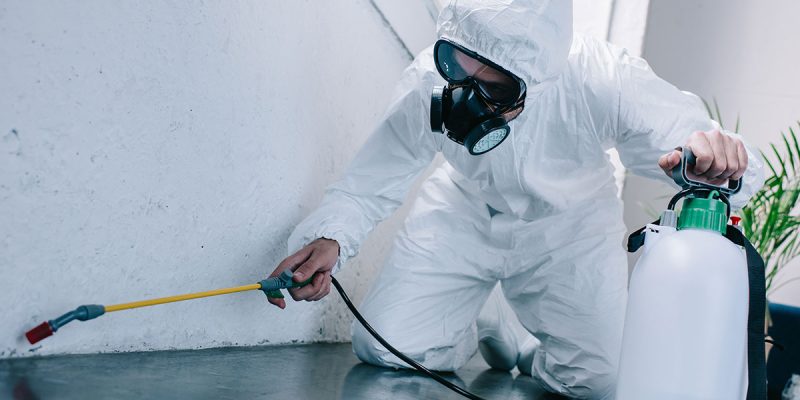Modern homeowners are increasingly concerned about the environmental and health impacts of traditional pest control methods. While chemical sprays and insecticides can be effective, they often come with drawbacks such as harmful residues, potential exposure to pets and children, and negative effects on beneficial insects like bees. Fortunately, eco-friendly pest control options offer a safer alternative, providing effective protection while minimizing environmental harm. Understanding these options can help you maintain a pest-free home without compromising safety or sustainability.
Why Eco-Friendly Pest Control Matters
Pest management is essential for health, property protection, and comfort, but conventional chemical solutions often raise concerns. Many homeowners worry about:
- Toxic residues left on surfaces and in air
- Accidental exposure to pets or children
- Water contamination through runoff
- Harm to pollinators and other beneficial insects
- Airborne chemicals aggravating allergies or asthma
Eco-friendly pest control addresses these issues by using methods that are safe, targeted, and sustainable. These solutions reduce environmental impact while maintaining the effectiveness needed to prevent infestations.
Integrated Pest Management (IPM) Principles
Integrated Pest Management (IPM) is the foundation of eco-friendly pest control. IPM emphasizes a combination of techniques to manage pests effectively while minimizing chemical use. Core components of IPM include:
- Prevention: Eliminating conditions that attract pests, such as standing water, food residue, and clutter
- Monitoring: Regular inspections to detect pests early before they become established
- Mechanical Controls: Using traps, barriers, and physical removal instead of relying solely on chemicals
- Biological Controls: Encouraging natural predators like ladybugs for aphid control or nematodes for soil pests
- Targeted Treatment: Applying eco-friendly pesticides only when necessary, and directly where pests reside
By integrating these approaches, homeowners can reduce pest populations safely and sustainably.
Natural and Non-Toxic Pest Treatments
Several non-toxic options are available for common household pests:
- Diatomaceous Earth: A natural powder made from fossilized algae that kills insects like ants, cockroaches, and bed bugs by dehydrating them
- Boric Acid: Low-toxicity powder effective against crawling insects, used carefully in cracks and crevices
- Essential Oils: Peppermint, eucalyptus, and tea tree oils can repel insects naturally, especially when used in sprays or diffusers
- Soap and Water Solutions: Effective for soft-bodied insects like aphids or mites on plants
- Sticky Traps and Mechanical Traps: Useful for rodents and insects, providing a chemical-free solution
These methods can often control small infestations and prevent them from becoming larger problems.
Eco-Friendly Rodent Control
Rodent management is an essential aspect of home pest control, and eco-friendly approaches can reduce reliance on toxic baits:
- Sealing Entry Points: Prevents mice and rats from entering your home
- Snap Traps: Targeted and chemical-free method to eliminate individual rodents
- Electronic Repellents: Devices that emit sound waves to deter rodents without chemicals
- Sanitation Practices: Properly storing food, sealing garbage, and reducing clutter minimizes food and shelter for rodents
By combining these strategies, homeowners can reduce rodent problems sustainably and humanely.
Preventative Landscaping for Eco-Friendly Control
Outdoor areas often serve as entry points for pests. Eco-friendly landscaping practices can help reduce infestations naturally:
- Remove Standing Water: Prevent mosquito breeding by eliminating stagnant water in pots, birdbaths, and gutters
- Plant Pest-Repellent Vegetation: Herbs like basil, lavender, and rosemary can deter insects
- Encourage Beneficial Wildlife: Birds, bats, and predatory insects help control pests naturally
- Maintain Clean Garden Beds: Mulch, compost, and soil maintenance can minimize hiding places for insects
Proper yard management supports eco-friendly pest control without harming the surrounding ecosystem.
Monitoring and Early Detection
Regular inspections are a cornerstone of eco-friendly pest control. Early detection allows homeowners to use non-toxic measures before infestations grow. Key areas to monitor include:
- Kitchen and pantry for ants, cockroaches, or pantry beetles
- Basements and crawl spaces for rodents or spiders
- Bathrooms for silverfish and mold-infesting insects
- Outdoor areas for mosquitoes, ticks, and aphids
By catching pests early, homeowners can limit the use of chemical interventions and rely on prevention and mechanical methods.
When Professional Eco-Friendly Assistance Is Needed
While many eco-friendly methods are effective for minor problems, some infestations require professional attention. Eco-conscious pest management companies specialize in combining IPM strategies, targeted treatments, and environmentally safe solutions. These experts can identify pest entry points, monitor populations, and implement long-term control strategies that minimize chemical exposure while maximizing effectiveness.
For homeowners seeking safe and sustainable pest control solutions, professional services can provide guidance and effective interventions. You can learn more at Positive Pest Management, where eco-friendly methods are applied to keep homes protected without compromising health or the environment.
Conclusion: Sustainable Pest Management
Eco-friendly pest control allows homeowners to maintain a safe, clean, and pest-free environment without relying heavily on harmful chemicals. By embracing prevention, early detection, mechanical controls, natural treatments, and professional guidance when necessary, homeowners can enjoy peace of mind and a healthy living space. Integrating these methods into your routine ensures both long-term effectiveness and environmental responsibility.












Comments